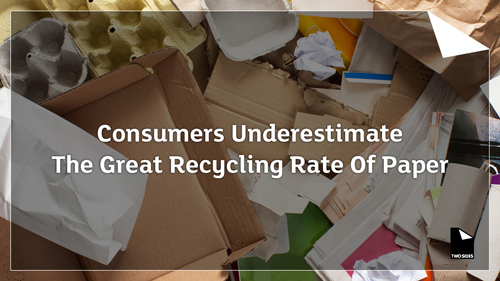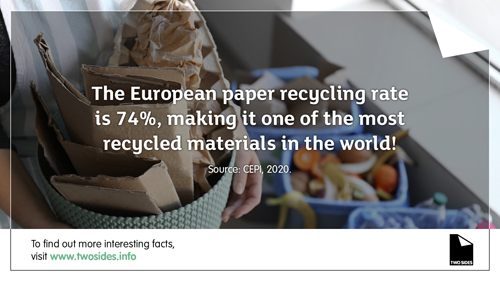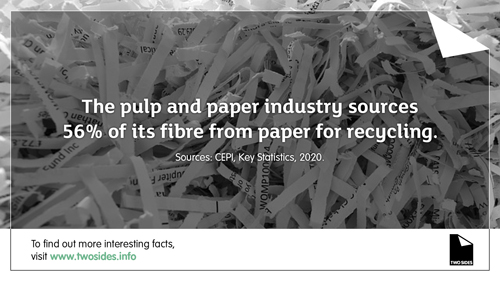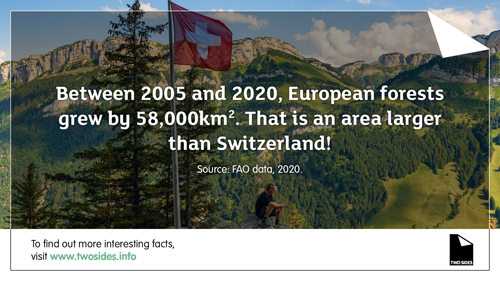Consumers are becoming increasingly conscious of their impact on the environment, and the majority of UK consumers believe the recycling rate of paper isn’t very high. This low consumer awareness is worrying when paper is, in fact, one of the most recycled materials in the world with a recycling rate of 74%.
A study, conducted by the not-for-profit organisation Two Sides and independent research company Toluna, aims to understand changing consumer perceptions towards print and paper. This insight into consumer attitudes towards one of the world’s oldest and universally used materials, will be repeated biennially to monitor and report upon evolving consumer perceptions, as environmental awareness intensifies and alternative digital channels of communication become prevalent.
Paper is one of the world’s most recycled materials. In Europe 74% of paper, 56m tonnes, was collected and recycled in 2020. Paper Packaging has an even higher recycling rate of 85%.
However, the study reveals 46% of UK consumers believe that paper and paper packaging is wasteful and highlights a real lack of understanding of the high recycling rates. Only 17% of UK consumers believe the recycling rate exceeds 60%. 15% think it is less than 20%, 34% between 20-39% and 34% between 40-59%. 18-24 year olds have the biggest misconception relating to recycling, with just 12% believing the recycling rate exceeds 60%. Paper compares favourably to other recycling rates: Glass 74%, Metal 80%, Plastic 42% and Electronics 42%.
As the research found that 66% of UK consumers believe only recycled paper should be used, it’s clear that most people understand the need for recycling paper and the fact that it’s sustainable. But, this also demonstrates a persistent myth that recycled paper is better for the environment.
Recycled paper is an essential part of the fibre mix. In 2020, paper for recycling made up 56% of fibre used. In Europe, on average, paper fibres are recycled 3.8 times and, after several uses, the recycled fibres degrade. Virgin fibre, from sustainably managed forests, is therefore always required to maintain the paper cycle.
The print and paper industry is surrounded by myths, many of which are rooted in historical misconceptions about paper’s impact on forests. For many years, service providers have reinforced these environmental myths in their efforts to move consumers to digital communications. The need to bust these myths and raise awareness of paper’s sustainability is now more important than ever.
The study found that only 9% of UK consumers understand that European forests are growing, when between 2005 and 2020, European forests grew by 58,390km2 – that’s an area larger than Switzerland and equivalent to 1,500 football pitches of forest growth every day.
Another myth commonly associated with the print and paper industry is that it uses a lot of energy in the paper making and print process. The truth is the pulp, paper and print industry is one of the leading sectors when it comes to renewable energy and mitigating carbon impact. The industry is relatively energy-intensive, but it also has a proven commitment to energy efficiency and is Europe’s biggest industrial user of renewable energy. This explains why the sector is responsible for comparatively low greenhouse gas emissions, at 0.8% of the European total.
Only by highlighting these myths and explaining the facts can people understand the true sustainability of paper as a raw material within the circular economy.
“This report shows there are many environmental misconceptions surrounding print and paper products,” says Jonathan Tame, Managing Director, Two Sides Europe. “We need to inform consumers of the high recycling rate and how paper is an important raw material in the circular economy.”







